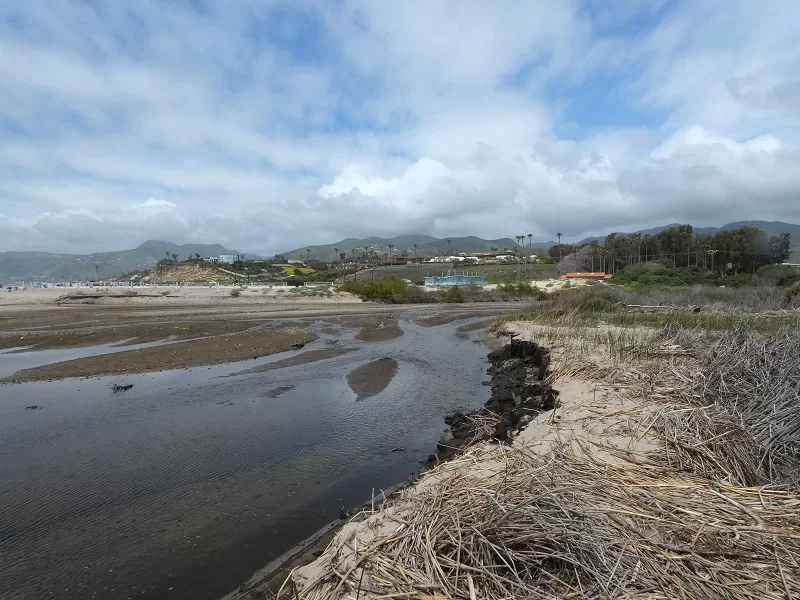The fourth annual Topanga Butterfly Day is almost here—save the date: May 7 (and read all the details on page 10). Helping the beautiful, instantly recognizable, critically threatened and beloved monarch butterfly was the inspiration for the first Topanga Butterfly Day. The event has grown to embrace and celebrate all native butterflies and pollinators and the plants they depend on. Here at TNT we are celebrating Topanga Butterfly Day and the monarchs that inspired it with a challenge for our readers: color our cover, or create your own butterfly art and share it with us at hello@topanganewtimes.com! Cover designed by Urs Baur, with help from you, dear reader, if you take part in our challenge!
April 22 is the 52nd annual Earth Day. In recent years, the day designated for environmental awareness has grown to become Earth Month. It is now celebrated around the world. In Los Angeles County there are many opportunities to participate in clean-ups and recycling events; workshops on saving water, composting, planting pollinator gardens; festivals with activities, music, nature walks and even rain barrel give-aways, but that doesn’t change the fact that the environmental news is overwhelmingly negative and can be overwhelming to one’s mental health.
The American Psychological Association has recommendations to cope with that overload that include turning off smartphone news notifications, setting a strict no-screen (including phones) policy for mealtimes, and adding other daily tech-free and media-free periods where possible. The APA also recommends defusing anxiety by taking some kind of action: donating to a cause, joining an aid group, signing a petition. Sometimes just talking to friends or family about it, or going outside in nature for a walk or a moment to breathe can help.
That we have so much outdoors around us in the Santa Monica Mountains is a reminder of all the activists who have refused to be discouraged, and have fought on to create the Santa Monica Mountains National Recreation Area, against all the odds. California is the most biodiverse state in the nation. That means that it is at the greatest risk for biodiversity loss, but it also means that even small conservation victories can have a powerful impact.
I am reminded of that every time I drive past the construction site on the 101 freeway, where the Wallis Annenberg Wildlife Crossing is being built. I have reported on the plight of the local mountain lion population for almost two decades. I never believed I would see that bridge become a reality, but there it is.
Buoyed by the progress on the 101 wildlife crossing project, the National Wildlife Federation’s #SaveLACougars campaign recently announced the creation of the Wildlife Crossing Fund, “a campaign that aims to accelerate the building of wildlife crossings across California, the United States, and the world and reconnect lands for our collective future.” The fundraising goal is half a billion dollars,” from private philanthropy that will be used as leverage with public dollars, and advance the building of these critical infrastructure projects.” Learn more at https://p22legacy.org
And in the past year, more than 2,000 acres have been added to the Santa Monica Mountains National Recreation Area, including the long sought and hard fought acquisitions of the final 350 acres of Triangle Ranch in Agoura Hills, and the 1,300-acre Mansdorf Property near the Los Angeles-Ventura county line, that permanently preserves nearly two miles of coastline.
Not all environmental news is bad news, and sometimes even the worst news can lead to change for the better.
In January of 1969, Union Oil’s offshore oil drilling rig called “Platform A,” located six miles off the coast of Santa Barbara, experienced a massive blow out that ejected an estimated 11 million gallons of crude oil into the ocean. The damage to the environment was staggering. It remains the third largest and most destructive spill in U.S. history, exceeded only by the Exxon Valdez in 1989 and the Deepwater Horizon in 2010.
The disaster helped launch the contemporary conservation movement. It galvanized activists up and down the coast and all over the country. The National Environmental Policy Act was passed in 1970 in direct response to the disaster. It was the driving force for the first Earth Day. Hope was the one thing left in Pandora’s box, and change can come from the most unlikely places.
In this issue of TNT, we have a special sneak peek at one of our favorite local environmental events: the fourth annual Topanga Butterfly Day. We also go back to school with JMo in our Storyland section; spend some time with Plato in the 21st century, and travel back in time for a look at the Malibu railroad war—one that ended with an unexpected early 20th century environmental victory. Little by little, we really do travel far. But not by train. Not around here, at least.
Stay safe, be well. Happy Earth Day!






